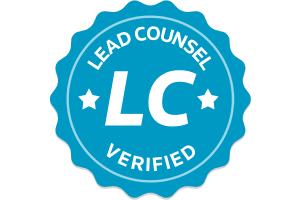for Over 25 Years
Isn’t the Person who hit me Legally Responsible to pay my Medical Bills?
This depends upon issues of legal fault. California is an “at fault” insurance jurisdiction, which means that if a party is found to be legally at fault in an accident, their insurance company is required to pay all “reasonable and necessary” medical expenses. Most often legal fault is determined based upon a negligence standard which means that both the driver and potentially the registered owner may be held liable for payment of medical bills incurred as a result of their negligent acts. Most often, whether someone was negligent will hinge upon a violation of the rules of the road as set forth in the California Vehicle Code or based upon a general standard that every person should act in a reasonable manner in the operation or entrustment of their motor vehicle.
Issues of Comparative Fault: The problem comes when there is a dispute as to fault. Legal fault in California can be apportioned to more than one person. This means that if an argument can be made that the person who hit you was at fault but, you or another driver was also at fault, the law can put a cap on recovery based upon the percentage of fault of each party. For example, if you get rear-ended by a vehicle that went out of control because another vehicle came swerved into them, the law may say that the party that rear-ended you is 60% at fault and the one that swerved is 40% at fault. If your total medical bills are $10,000, Party One would be responsible for $6,000 and Party Two for $4,000. Likewise, if you were not wearing your seatbelt, it may be that you are held to be 20% responsible for your injuries and their liability would be reduced to $8,000 (putting Party one on the hook for $4,800 and Party Two for $3,200).
Arguments as to the “Reasonable Value” of the Medical Services: The other complicating factor is that the law requires responsible parties to only pay for the “reasonable value” of medical treatment. Because insurance companies are in the business of trying to pay out as little as possible, auto accident claims adjusters often argue that even though the bill is $1,000, it really shouldn’t have cost more than $800, for an X-ray or some type of treatment. California law further complicates things with a series of cases, most notably Howell v. Hamilton Meats Co., where the California Supreme Court held that the “reasonable value” of medical services is the amount paid by health insurance rather than the amount of the actual bill.
Need to Complete Treatment Prior to Submitting a Demand for Payment of Medical Bills: Medical treatment for injuries sustained in a car accident usually take awhile to complete. Often there is initial evaluation and treatment at an Emergency Room or Urgent Care facility which recommends further follow up treatment including physical therapy, which can take several months. The auto insurance carrier doesn’t pay medical bills as you go along. They agree to pay a lump sum after treatment is completed and all final bills and records have been submitted. If treatment is going through health insurance, a so-called “super bill” needs to be obtained showing all charges and what insurance paid prior to submitting a settlement demand. In contrast, you could agree to “treat on a lien basis”, which means that the medical provider will wait for payment until the end of the case. An experienced car accident attorney can assist with processing the claim with the various insurance companies and can help find medical providers who are willing to wait to get paid until the end of the case. This is why it important to retain an attorney to assist with the medical expenses.












